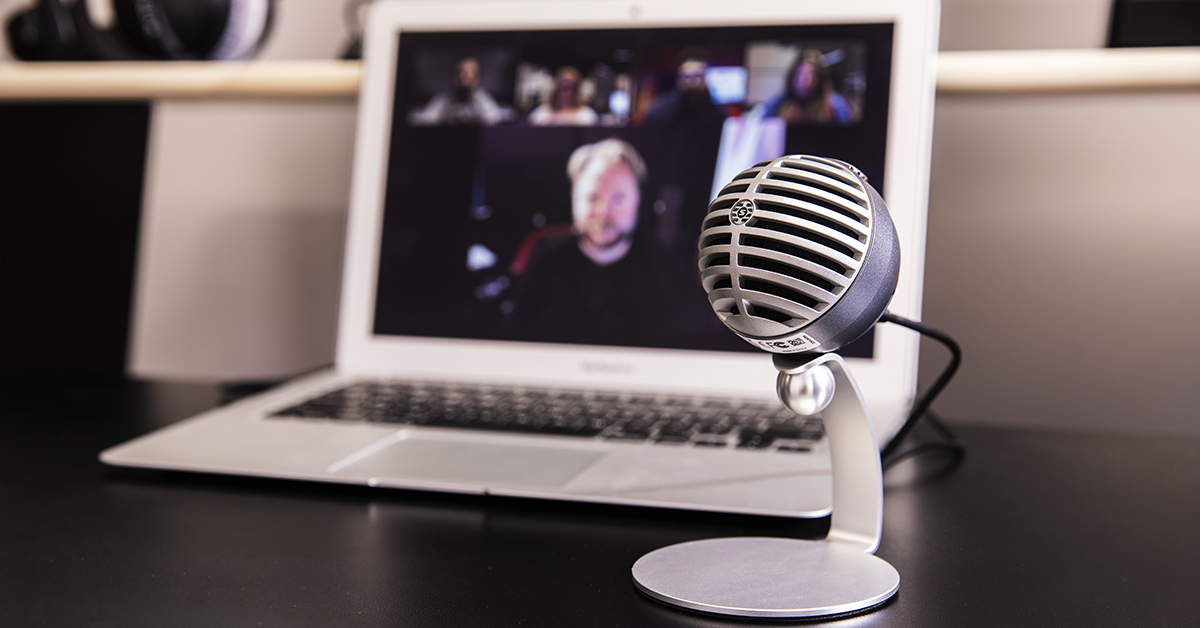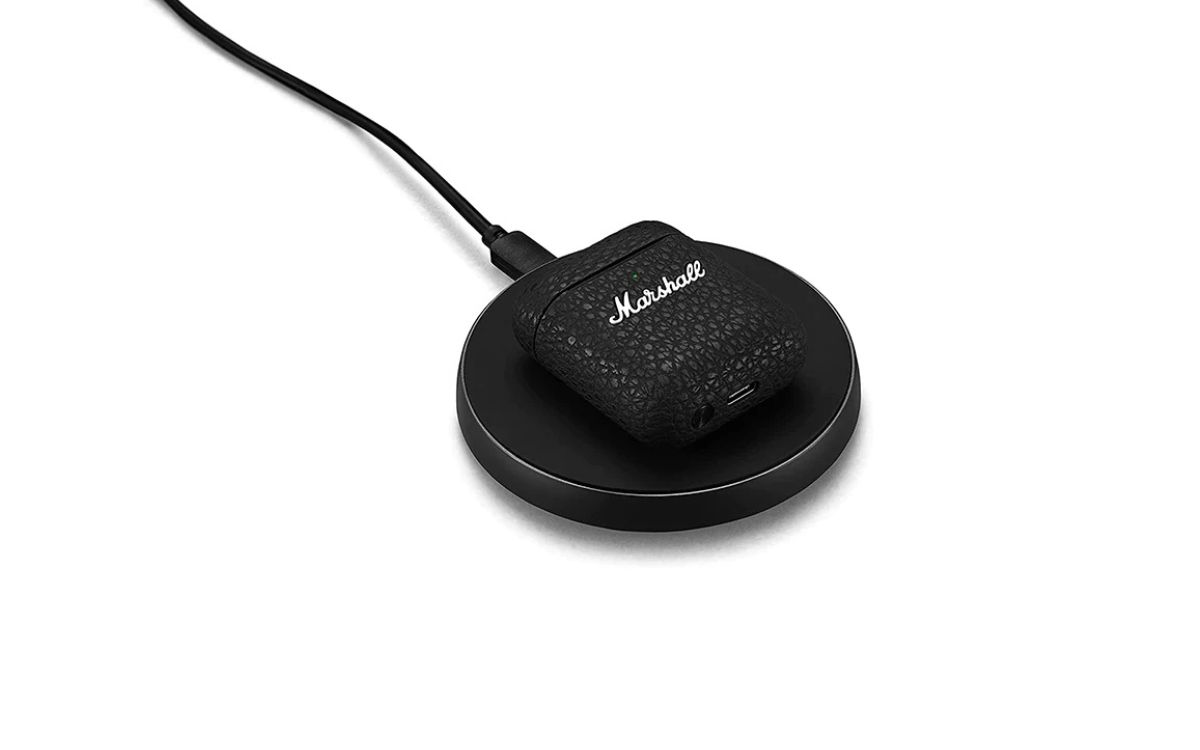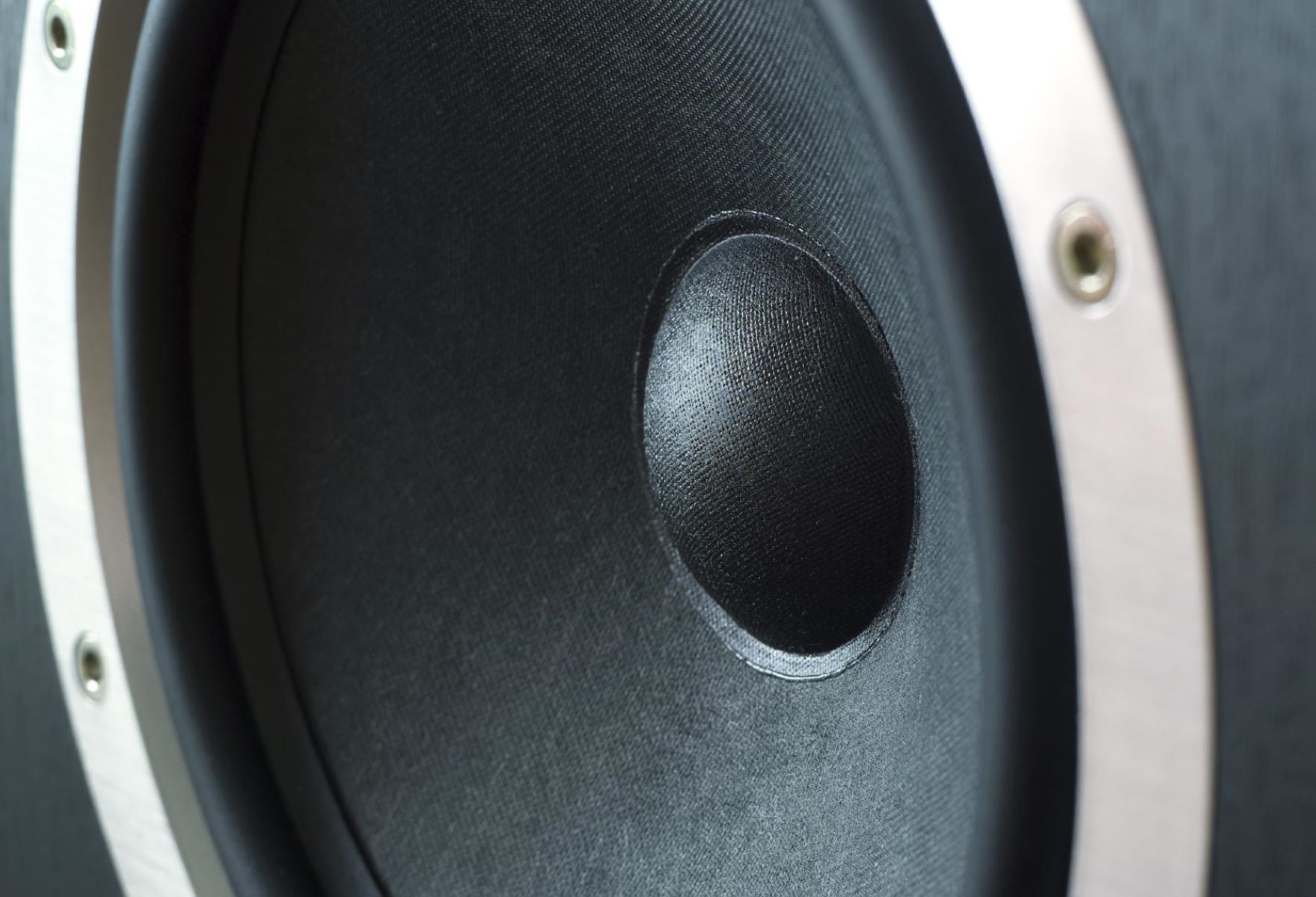Home>Devices & Equipment>Microphone>Why Is My Microphone Muted


Microphone
Why Is My Microphone Muted
Published: February 17, 2024
Discover why your microphone is muted and how to fix it. Troubleshoot common issues and learn how to unmute your microphone.
(Many of the links in this article redirect to a specific reviewed product. Your purchase of these products through affiliate links helps to generate commission for AudioLover.com, at no extra cost. Learn more)
Table of Contents
Understanding Microphone Mute: Why Is My Microphone Muted?
Introduction
Have you ever found yourself in a virtual meeting, eagerly sharing your thoughts, only to realize that no one can hear you? It's a frustrating experience that many of us have encountered at some point. The culprit behind this inconvenience is often the microphone mute function. Understanding why your microphone is muted is the first step in resolving this issue and ensuring seamless communication in virtual environments, whether it's for work, gaming, or connecting with friends and family.
In this article, we'll delve into the intricacies of the microphone mute function, exploring the common causes behind muted microphones and providing practical troubleshooting steps to help you rectify the issue. Whether you're a seasoned tech enthusiast or a casual user, gaining insights into the dynamics of microphone muting can empower you to navigate digital communication with confidence and ease.
So, why is your microphone muted? Let's embark on a journey to unravel the mysteries of this essential yet occasionally perplexing feature. Whether you're contending with software glitches, hardware malfunctions, or user oversight, we'll equip you with the knowledge and strategies to conquer the challenge of a muted microphone. Let's dive in and demystify the perplexing world of muted microphones.
Understanding the Microphone Mute Function
Before delving into the potential reasons behind a muted microphone, it’s crucial to comprehend the functionality of the microphone mute feature. In essence, the mute function serves as a convenient tool for temporarily disabling the microphone’s audio input. This can be particularly useful in various scenarios, such as muting background noise during a call, silencing oneself in a virtual meeting, or preventing unintended audio transmission.
When a microphone is muted, it ceases to capture and transmit sound, effectively rendering it temporarily inactive. This action can be initiated through software settings, hardware controls, or dedicated mute buttons on the microphone itself. Understanding how the mute function is activated within different contexts is essential for troubleshooting and resolving instances of unintended muting.
While muting the microphone can be a deliberate action, it can also occur inadvertently, leading to confusion and frustration for the user. Recognizing the indicators of a muted microphone, such as visual cues in software interfaces or hardware illumination, is pivotal in swiftly identifying and addressing the issue.
Moreover, the mute function is integral to maintaining privacy and controlling audio output in diverse environments. Whether in professional settings where discretion is paramount or in casual interactions where background noise may disrupt communication, the ability to mute the microphone offers users a sense of agency and control over their audio presence.
By comprehending the purpose and mechanisms of the microphone mute function, users can navigate digital communication with greater confidence and efficacy. In the subsequent sections, we will explore the common causes of microphone muting and equip you with troubleshooting strategies to swiftly resolve any issues that may arise.
Common Causes of Microphone Muting
Microphone muting can stem from a variety of factors, ranging from user actions and software configurations to hardware malfunctions. Understanding these common causes is instrumental in swiftly identifying and addressing the issue. Let’s explore some prevalent reasons behind microphone muting:
- Software Settings: One of the primary causes of microphone muting is inadvertent adjustments to software settings. This can occur when using communication applications, such as video conferencing platforms or voice chat programs, where users may unintentionally mute their microphones through interface controls or keyboard shortcuts.
- Hardware Controls: Many microphones feature physical controls, such as mute buttons or switches, which can lead to accidental muting if triggered unknowingly. Additionally, headsets with inline volume controls may include a mute function that can be activated unintentionally.
- System Updates and Glitches: Software updates or glitches within operating systems and applications can occasionally lead to unexpected changes in microphone settings, resulting in muted audio input. These issues may arise following system updates or software installations.
- Application-Specific Muting: Certain applications may possess unique settings or permissions that can mute the microphone without the user’s explicit input. Understanding the intricacies of individual applications and their audio configurations is crucial in diagnosing and rectifying application-specific muting.
- Hardware and Connection Issues: Physical hardware malfunctions, such as faulty connections, damaged cables, or defective microphones, can also lead to muted audio input. Identifying and addressing hardware-related issues is essential for restoring microphone functionality.
By recognizing these common causes of microphone muting, users can approach troubleshooting with a targeted and informed mindset, thereby expediting the resolution process. In the subsequent sections, we will delve into practical troubleshooting steps to address these issues effectively, empowering users to reclaim seamless audio communication in their digital endeavors.
Troubleshooting Steps
Addressing microphone muting issues involves a systematic approach that encompasses software, hardware, and user interactions. By following structured troubleshooting steps, users can swiftly identify and resolve the underlying causes of muted microphones. Let’s explore practical strategies for troubleshooting microphone muting:
- Checking System Settings: Begin by examining the system’s audio settings to ensure that the microphone is not muted at the system level. This involves navigating to the sound settings on your device and verifying that the microphone input is enabled and properly configured.
- Application-Specific Issues: If the microphone is muted only within certain applications, review the audio settings and permissions within those applications. Ensure that the microphone is not muted or restricted within the application’s settings, and grant necessary permissions for audio input.
- Hardware and Connection Problems: Inspect the physical connections and components of the microphone setup. Check for loose connections, damaged cables, or hardware malfunctions that could be contributing to muted audio input. If using an external microphone, consider testing it on a different device to isolate hardware-related issues.
- Software Updates and Configurations: Stay informed about recent software updates and configurations that may impact microphone functionality. Verify that system updates have not inadvertently altered microphone settings, and review application-specific configurations to ensure that they align with your audio preferences.
By methodically addressing these troubleshooting steps, users can effectively diagnose and resolve microphone muting issues, restoring seamless audio input for their communication needs. Additionally, staying proactive in maintaining software updates and hardware integrity can mitigate the occurrence of microphone muting, fostering a more reliable and consistent audio experience.
Armed with these troubleshooting strategies, users can navigate the intricacies of microphone functionality with confidence, ensuring that their voice is heard loud and clear in virtual interactions, gaming escapades, and professional engagements.
Checking System Settings
Verifying the system settings is a fundamental step in troubleshooting microphone muting issues. By examining the audio configurations at the system level, users can identify and rectify potential causes of muted microphones. Here’s a comprehensive guide to checking system settings for optimal microphone functionality:
- Sound Settings: Access the sound settings on your device, which can typically be found in the system preferences or control panel. Ensure that the microphone input is enabled and the volume levels are appropriately adjusted. In some cases, the microphone input may be muted or set to a low volume, leading to diminished or inaudible audio input.
- Microphone Permissions: Modern operating systems and applications often require explicit permissions for microphone access. Review the privacy settings on your device to confirm that the application requiring microphone input has been granted the necessary permissions. Without proper permissions, the microphone may be muted or inaccessible within specific applications.
- Default Input Device: Verify that the correct microphone is selected as the default input device. In multi-device setups or when using external microphones, the system may default to an unintended input source, leading to muted audio input. Select the appropriate microphone from the system settings to ensure that audio is captured from the desired source.
- Driver Updates: Check for updates to the audio drivers on your device. Outdated or malfunctioning drivers can impact microphone functionality, leading to issues such as muted audio input. Updating the audio drivers to the latest versions can resolve compatibility issues and enhance overall microphone performance.
By meticulously reviewing and adjusting the system settings, users can proactively mitigate potential causes of microphone muting, fostering a more reliable and consistent audio experience. Additionally, staying informed about system updates and driver maintenance is instrumental in preserving optimal microphone functionality for various digital activities.
With a keen focus on system settings and permissions, users can ensure that their microphone is primed to capture and transmit audio with clarity and precision, enabling seamless communication across virtual platforms and applications.
Application-Specific Issues
When encountering microphone muting within specific applications, it is essential to address application-specific settings and permissions to restore audio functionality. By navigating the audio configurations within individual applications, users can troubleshoot and rectify issues related to muted microphones. Here’s a comprehensive overview of addressing application-specific microphone muting:
- Audio Settings: Access the audio or microphone settings within the application where the muting issue is observed. Verify that the microphone input is not muted or set to an inaudible volume. Adjust the microphone settings to ensure that audio input is enabled and appropriately configured for optimal performance.
- Permissions and Access: Review the application’s permissions related to microphone access. Some applications require explicit user consent to access the microphone for audio input. Confirm that the necessary permissions have been granted to the application, allowing it to utilize the microphone without restrictions.
- Communication Platforms: In the context of communication platforms and video conferencing applications, such as Zoom, Microsoft Teams, or Skype, ensure that the microphone is selected as the active input device within the application’s settings. Additionally, check for any mute controls within the application interface that may inadvertently silence the microphone.
- Testing and Troubleshooting: Utilize the application’s built-in audio testing features, if available, to diagnose microphone muting issues. Many applications offer diagnostic tools to assess microphone functionality and troubleshoot audio input problems. By conducting tests within the application, users can pinpoint and address specific muting issues effectively.
By addressing application-specific settings and permissions, users can navigate the intricacies of microphone functionality within diverse digital environments, ensuring that their voice is consistently conveyed with clarity and precision. Additionally, familiarity with application-specific audio configurations empowers users to tailor their microphone settings to suit their unique communication needs and preferences.
With a nuanced understanding of application-specific audio settings and permissions, users can confidently engage in virtual interactions, collaborate seamlessly in professional settings, and partake in immersive gaming experiences without the hindrance of muted microphones.
Hardware and Connection Problems
When troubleshooting microphone muting issues, it’s imperative to consider potential hardware malfunctions and connection problems that may impede audio input. By meticulously inspecting the physical components of the microphone setup and assessing connectivity, users can identify and address issues that lead to muted microphones. Here’s a comprehensive exploration of hardware and connection troubleshooting:
- Physical Inspection: Begin by visually examining the microphone, its connecting cables, and associated hardware components. Look for any signs of damage, wear, or disconnection that may affect the microphone’s functionality. In the case of external microphones, inspect the connectors and ports for any anomalies.
- Connection Stability: Ensure that the microphone is securely connected to the appropriate input port on your device. Loose connections can result in intermittent audio input or complete muting. Reinsert the microphone’s connector and verify that it is snugly seated in the input port to establish a stable connection.
- Alternate Devices: If feasible, test the microphone on an alternate device to ascertain whether the muting issue persists across different platforms. This can help isolate whether the problem is related to the microphone itself or the original device’s audio input capabilities.
- External Interference: Consider environmental factors that may contribute to muted microphone issues, such as electromagnetic interference or ambient noise. Position the microphone away from potential sources of interference, such as electronic devices or power cables, to minimize audio disruptions.
By meticulously addressing hardware and connection issues, users can proactively mitigate potential causes of microphone muting, fostering a more reliable and consistent audio experience. Additionally, maintaining the integrity of the microphone setup and its connections is instrumental in preserving optimal audio input for various digital activities.
With a keen focus on hardware inspections and connection stability, users can ensure that their microphone operates seamlessly, capturing and transmitting audio with clarity and precision across diverse virtual platforms and applications.
Conclusion
Unraveling the mysteries of microphone muting unveils a spectrum of factors that can impact audio input, ranging from software configurations and user interactions to hardware integrity. By delving into the intricacies of the microphone mute function and its potential pitfalls, users can equip themselves with the knowledge and strategies to swiftly address muted microphone issues, fostering uninterrupted communication and seamless audio experiences.
Understanding the nuances of microphone muting empowers users to navigate virtual interactions, gaming endeavors, and professional engagements with confidence, ensuring that their voice resonates with clarity and precision. Whether contending with software glitches, hardware malfunctions, or application-specific challenges, the ability to troubleshoot and resolve muted microphone issues is instrumental in maintaining fluid communication across diverse digital environments.
By methodically addressing system settings, application-specific configurations, and hardware integrity, users can reclaim the full functionality of their microphones, enabling them to articulate their thoughts, share experiences, and collaborate effectively without the hindrance of muted audio input. Proactive maintenance of software updates, driver compatibility, and physical connections further fortifies the reliability of microphone functionality, fostering a seamless audio experience across various digital platforms.
As users embrace the multifaceted nature of microphone muting, they can navigate the complexities of digital communication with poise and efficacy, ensuring that their voice is consistently heard and valued in virtual spaces. By demystifying microphone muting and embracing proactive troubleshooting, users can elevate their digital interactions, gaming escapades, and professional collaborations, fostering a more immersive and engaging audio experience.
Armed with a comprehensive understanding of microphone muting and the tools to address potential challenges, users can embark on their digital endeavors with the assurance that their voice will always resonate loud and clear, transcending the barriers of muted microphones and enriching their virtual interactions with unparalleled clarity and expression.











